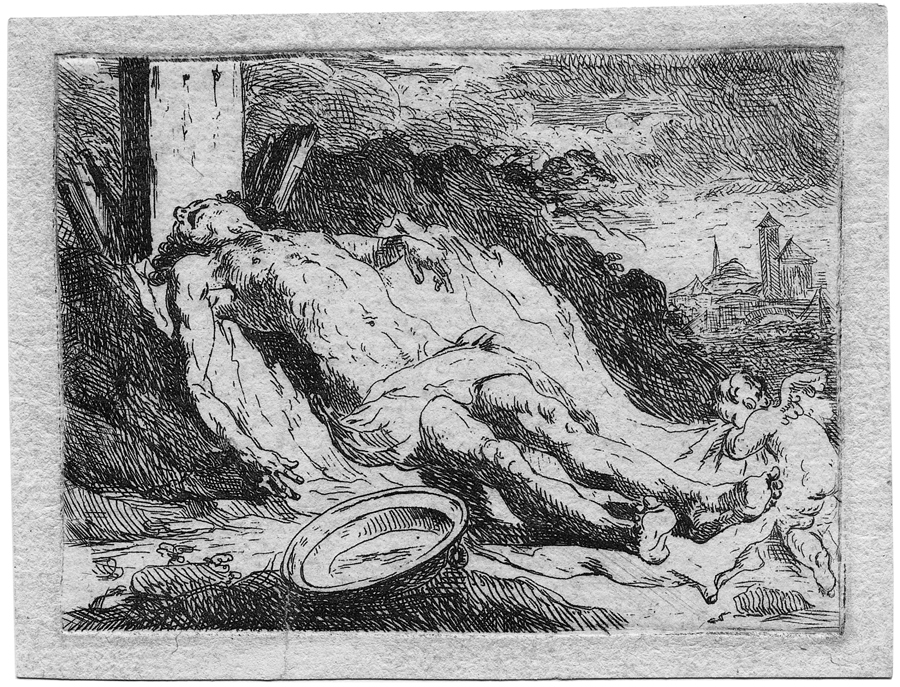Loading the page ...
Michel François Dandré-Bardon
(1700 Aix-en-Provence – 1783 Paris)
Christ in front of the Cross. Etching. 6.7 x 9.1 cm. Le Blanc 1; Beraldi 3, 729.
Dandré-Bardon led a varied and interesting life. A native of Aix-en-Provence, the artist not only enjoyed considerable success as a painter, but was also active as a writer, poet and composer. In Paris he studied under Jean-Baptiste van Loo and Jean François de Troy before leaving his native land in 1725 to stay in Rome for six years. After his return to Paris he became a member of the Academy in 1735 and won recognition in the following years by exhibiting his religious and mythological paintings at the Salon. Relatively few of his artworks have survived and so our knowledge of his œuvre is very limited. The number of public offices he held during his life confirms his renown and reflects the diversity of his interests. Dandré-Bardon was a member of the Académie des Belles Lettres in Marseilles, where he also founded and headed the École Académique. Back in Paris in 1755 he was appointed Professor of History and Geography at the École des Élèves Protégés. In this capacity he devoted himself mainly to the ethnological study of costumes and customs in order to help his pupils achieve authenticity in painting historical themes. Dandré-Bardon’s literary activity as an author of works on the theory and history of art is very significant and in the course of time increasingly overshadowed his artistic activities.
Dandré-Bardon’s printed œuvre is of great rarity, comprising just three etchings. Evidently the artist engaged in etching only as an artistic exercise or for his private satisfaction. Nevertheless, the present small-format print vividly documents his talent in all its originality. The moving scene is rendered in a very dynamic, spontaneous and almost sketch-like etching style. The gaunt body of the dead Christ has nothing of the heroic or divine about it, resembling more the corpse of a man who has fallen on the battlefield. This impression is reinforced by the drastic angle of the body, which is stricken by rigor mortis and lying on a shroud, and by the rendering of the barely visible face with an open mouth and pronounced nostrils. There are no staffage figures apart from a little mourning angel and the landscape is bleak and inhospitable, making the maltreated, anonymous body more of an unsparing image of human suffering and death. A very fine, contrasting impression with a narrow margins around the platemark.
